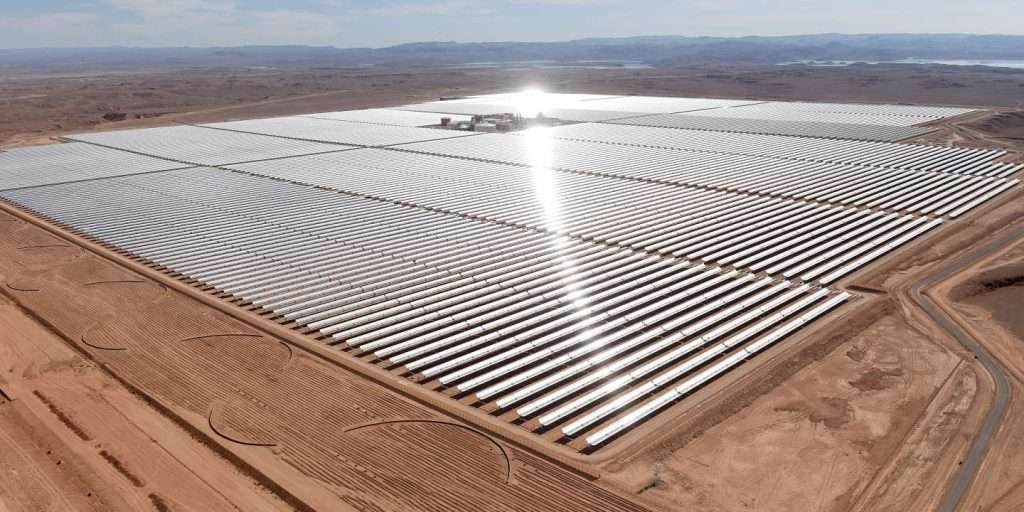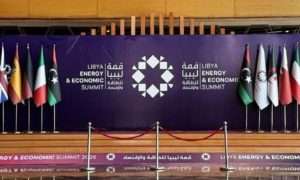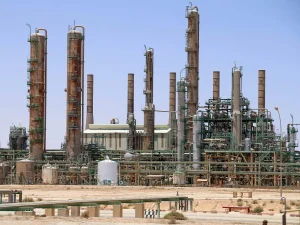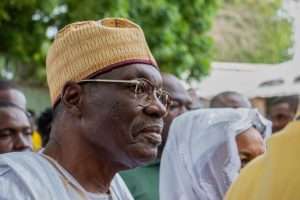Solar Strategy in Morocco: Expert Review

Experts are following with interest the governments of Arab countries in North Africa focusing heavily on sustainable energy projects, as they believe that Morocco will be the biggest winner from Europe’s transition to clean electricity from nearby sources.
Although the region has some projects, which are among the largest in the world in this field, Tunisia, Algeria, Mauritania and Libya, with the exception of Morocco and Egypt, are still moving slowly in this direction, under the current circumstances.
Over the past years, Morocco has already put solar energy on top of its priorities, and seeks to generate 52 percent of clean electricity by 2030, of which 20 percent is expected to come from solar energy.
The country finds itself in a privileged position as its climate, desert sun and coastal winds make it a prime candidate for international solar farms and wind energy.
Its coastal cities and its proximity to Europe give it an advantage to become a major source of European energy while the countries of the continent move away from Russian natural gas. While this would be a boon for the Moroccan economy, it would come at a significant cost to the African energy market.
 Hayley Zarmba, an economist, says in a report published by the American “Oil Price” platform that North African countries need intensive investment and industry to build their economies, and they also need energy to support their development.
Hayley Zarmba, an economist, says in a report published by the American “Oil Price” platform that North African countries need intensive investment and industry to build their economies, and they also need energy to support their development.
According to estimates, Morocco imports 90 percent of its energy, and the largest share of it remains from fossil fuels, despite the country’s enormous potential in the clean energy sector.
The Moroccan energy mix in 2021 included only 2.4 percent of wind energy and four percent of solar energy, but production capacity that year grew by 37 percent year on year.
In one of its reports published in 2019, the International Energy Agency predicted that the demand for electricity in North Africa would increase by 35 percent by 2030.
Murder Intelligence recently estimated that the alternative energy market in North Africa will grow at a compound annual growth rate of more than 6 percent until 2025.
A large part of the demand will be due to air conditioning, which is expected to become essential as the desert climate becomes more severe due to climate change.
Morocco’s approach allows it to position itself as an industrial center to invest in exports of green industrial products
Zarmba believes that this means that the growth of renewable energy remains the primary way to help the region meet its energy needs without neglecting its climate goals.
There are already major renewable energy projects in North Africa, many of which are designed to meet growing African demand and reduce the continent’s carbon footprint.
However, this energy is sent to European markets, which are struggling to restore energy security from multiple sources, including the Middle East and Africa, to wean themselves off Russian supplies as punishment for Moscow, which launched a war on Ukraine more than a year ago.
Last Wednesday, the European Union launched the first international tender to buy gas collectively, covering the total demand of about 80 European companies, to obtain better prices to replenish stocks before next winter.
Indeed, Morocco currently exports electricity to European markets through two lines extending to Spain, and last year it signed an agreement to expand the supply network to the EU countries.
Last month, a project to link electricity produced from sustainable sources between Morocco and Britain obtained the necessary financing from the Emirati energy company and its ally, the Octopus Energy Group, at a value of more than $37 million.

This investment is the first project of its kind in the world to transport electricity generated from renewable energy sources over long distances and export it across borders to meet the growing demand for electricity services.
Percent growth rate of this market in the region annually until 2025, according to Mordor Intelligence
The project, which will generate 10.5 gigawatts when it starts operating in 2027, links the two countries from the Moroccan side of Guelmim-Oued Noun, and the cables are scheduled to pass through Portugal, Spain and France for a distance of more than 3,800 km.
The American magazine “Yale 360”, which specializes in the world of the environment, stated in a report it recently published on its electronic platform that Morocco has a regional energy network, thanks to which it can send green electricity to most countries in West Africa, while Egypt is connected to most of the eastern continent.
And Yale confirmed that the electricity exports of the two countries, which seek to expand the map of projects related to securing energy through clean sources, are destined for European markets instead.
While many Moroccan politicians and business leaders welcome this trend, the outlook is starker for North Africa, which will not benefit from trade with Europe.
Zarmba asserts that the scale of clean energy projects planned in Morocco indicates that the region must prepare for a new round of land grabs.
McKinsey’s platform reports that solar and wind farms in the US require at least ten times as much space as coal or gas-fired power plants, including the land used to produce and transport fossil fuels.
“Wind turbines often span half a mile, while large solar farms span thousands of acres,” McKinsey experts said.
Some of the planned projects in North Africa appear to be among the largest in the world and these developments are likely to occur “with minimal community consultation or environmental assessment,” warns Yale. It would certainly create great disturbances to flora, fauna and populations on a large scale.
Although the Sahara Desert is portrayed as empty space, it is in fact a fragile ecosystem that supports nomadic pastoral communities whose lives and herding patterns will be upended with the arrival of the industrial energy revolution.
“This disturbance will be a matter if it is not decided to adopt part of this energy to feed the local electricity grid,” Zarmba said.
There are of course two sides to this story. Producing wind and solar power for export to Europe could create up to 28,000 jobs annually, according to Moez Sharif, the World Bank’s chief economist for the region.
This is significant in a country where the unemployment rate is around 11.2 percent. This approach, Cherif said, would allow Morocco to “position itself as an industrial hub for green industrial product export investments.”
alarab.co.uk
Want to chase the pulse of North Africa?
Subscribe to receive our FREE weekly PDF magazine













